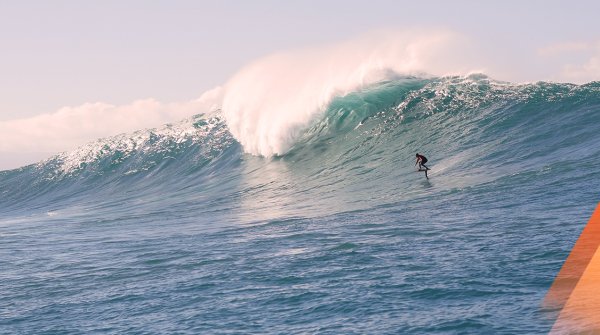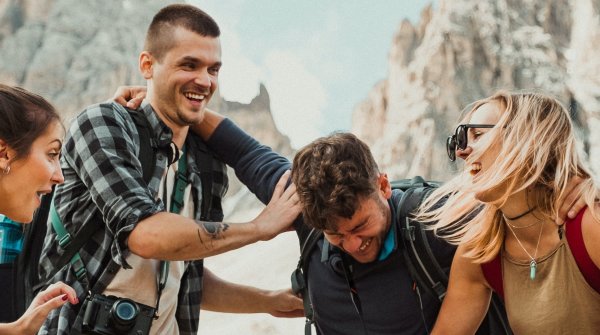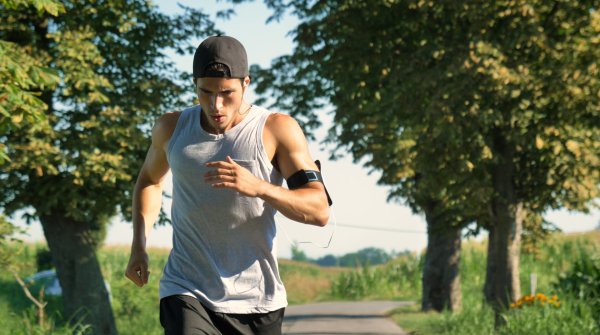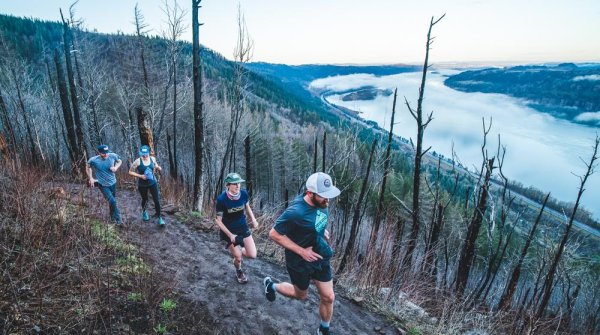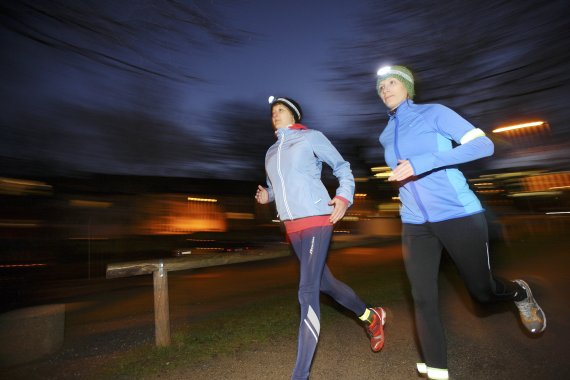
Too cold, too wet, too dark - winter is not exactly the season that invites you to run. At least during the week many people can only put on their running shoes in the morning or evening - when it is either still dark or already dark.
Lack of light is no reason to skip training. However, to be safe in the dark, runners should take some advice to heart.
Before the ISPO Munich Night Run on 1 February 2020 we have compiled the best tips for running in the dark.
See and be seen is the motto for everyone who wants to walk in the dark. A headlamp is the best way to illuminate the path. Special runner lamps are flat and lightweight, sit firmly on the head and yet do not hurt. Newer models have LEDs, provide a wide field of view and can be charged via USB cable.
When buying, runners should make sure that the lamp is splash-proof and height-adjustable. Different light modes can be useful. The headgear should also be wide enough and adjustable in width. Tip: It's best to try it out in the shop to see if the lamp is easy to use on your head and with gloves on.
A well-fitting headlamp feels completely inexistent after a few kilometres of running. If you still don't like a lamp on your head, a chest lamp worn on your upper body might be a better alternative.
Even when running, it is not enough to see well - other road users must be able to see that a jogger is on the way. More visibility is provided by reflective or flashing bands on arms and ankles. A safety vest can also be useful and is not as uncomfortable as you think when running. Runners' clothing for the winter should be bright and equipped with reflectors - the more, the better. Additional safety is provided by red clip-on lights for the back. They can be attached to the jacket waistband or collar, for example.
Before the start, a test is helpful: What do my neighbours or acquaintances who are travelling by car say? Can they tell from a distance that someone's running?
Even if you have grown fond of the usual summer route and can hardly do without it, not all running tracks are suitable for training in the dark. The best locations in the darkness are illuminated, asphalted paths.
Runs through terrain where there is a risk of twisting should be postponed to the light hours of the day to reduce the risk of injury. To do this, it is best to check the current sunset time before starting to run. And find out the sunrise for the next days - maybe it will be light earlier than expected?
More tips for on the go:
- Always against the traffic: If you walk along a road in the dark, you should choose the side where the traffic runs towards you.
- Without acoustic irradiation: Even if this is difficult - runners should better do without music in the ear in the dark. If you can't see well, you should at least hear well.
- Increased attention: Paying attention to road traffic and other road users is always important, but especially in winter. In the dark it is better to look once too much than once too little before crossing the road!
In the event of an assault, women are usually inferior. It's understandable that many are afraid to run alone in the dark. To be on the safe side, joggers should therefore take a few additional precautions:
- No routine: It's safer to run on tracks you know well. But never always on the same day at the same time! It is best to always have two or three routes to choose from, even in winter, so that there is no routine.
- In good company: The probability of an attack in a huge forest is lower than in the city. However, the more lonely the path, the less likely it is that help will be there quickly in an emergency. In winter, the best routes are those on which many other runners are on the move, even in the dark.
- Two-legged or four-legged companions: Alone you are more vulnerable than in a group. Run appointments are therefore useful in the dark, not only for motivation. If there is no biped to run, a dog can be a deterrent companion.
- The right equipment: Runners should take a mobile phone with them, but not pepper spray. The danger is too great to hurt yourself with it.
- A question of feeling: Usually you can rely on your intuition. If a situation seems strange while running or a familiar area suddenly seems creepy, caution is advisable. It's better to take a shortcut than stay on the usual route with a bad feeling.
- Strong and self-confident: It can't hurt to learn self-defense techniques for more safety. Should somebody make you stop in a lonely neighborhood: Do not engage in discussion, remain confident and raise your voice when needed.
- Precautions: It can never hurt to let someone know where and for how long you want to walk. Special apps for mobile phones (see below) provide additional security.
There are now a number of apps for smartphones that increase security for runners - not just in the dark. The accompanying app "WayGuard", for example, was co-developed by police officers. Also "Glympse", "FamiSafe" or "Life360" are often used security applications. They share the user's location in real time with friends or family and enable a quick emergency call.
If you use an athlete app to record your training anyway, you can also share your current location with friends in some applications: "Strava", "MapMyRun" and "RunKeeper", for example, have such live functions. Also helpful are special emergency wristbands that sound a shrill alarm at the push of a button and drive away attackers. Important: Wear the emergency bracelet over your jacket, not under it, where it is difficult to find under stress.
In winter, runners not only have to struggle with darkness, but also with cold, snow and sometimes ice. Those who still jog outside should choose shoes with a good profile, such as special trail running shoes, and if necessary put on one more layer of clothing.
Don't forget your hat or headband and gloves! For orientation: If you're still shivering when you start running, you're dressed just right - after a few minutes it gets warm all by itself.
- Awards
- Mountain sports
- Bike
- Fitness
- Health
- ISPO Munich
- Running
- Brands
- Sustainability
- Olympia
- OutDoor
- Promotion
- Sports Business
- Textrends
- Triathlon
- Water sports
- Winter sports
- eSports
- SportsTech
- OutDoor by ISPO
- Heroes
- Transformation
- Sport Fashion
- Urban Culture
- Challenges of a CEO
- Trade fairs
- Sports
- Find the Balance
- Product reviews
- Newsletter Exclusive Area
- Magazine


